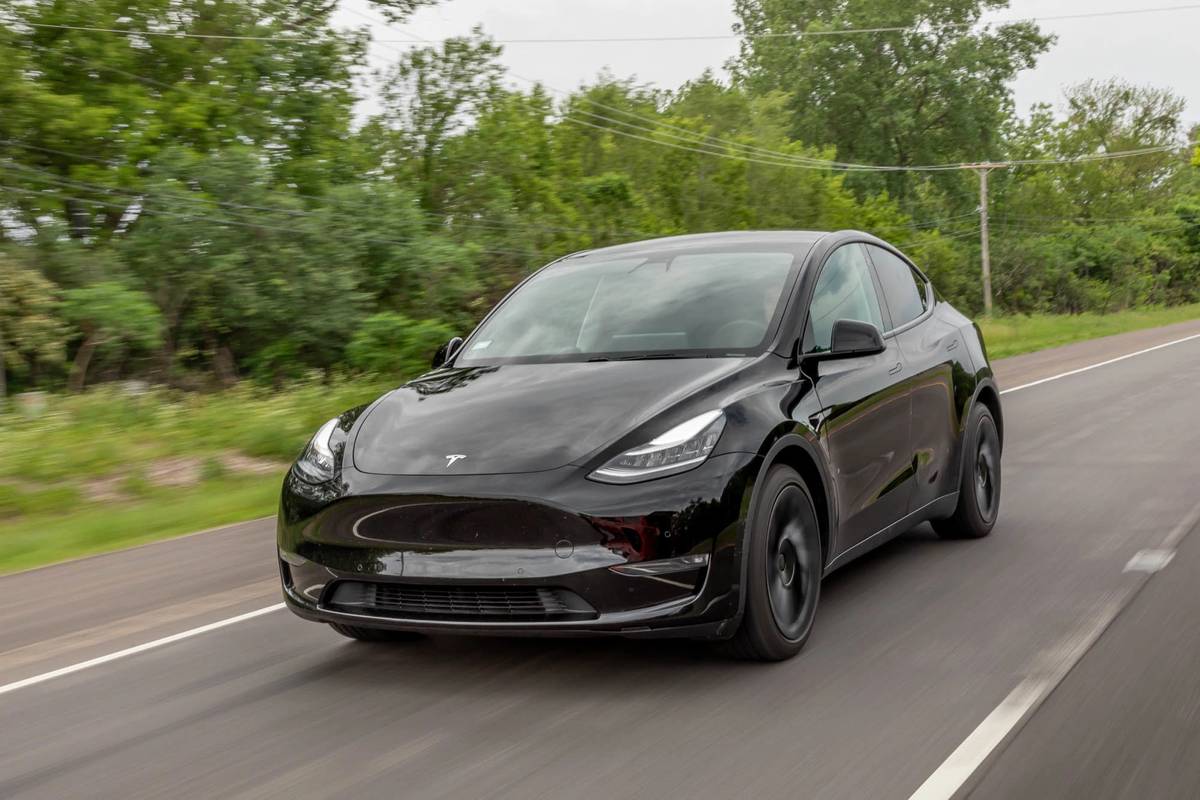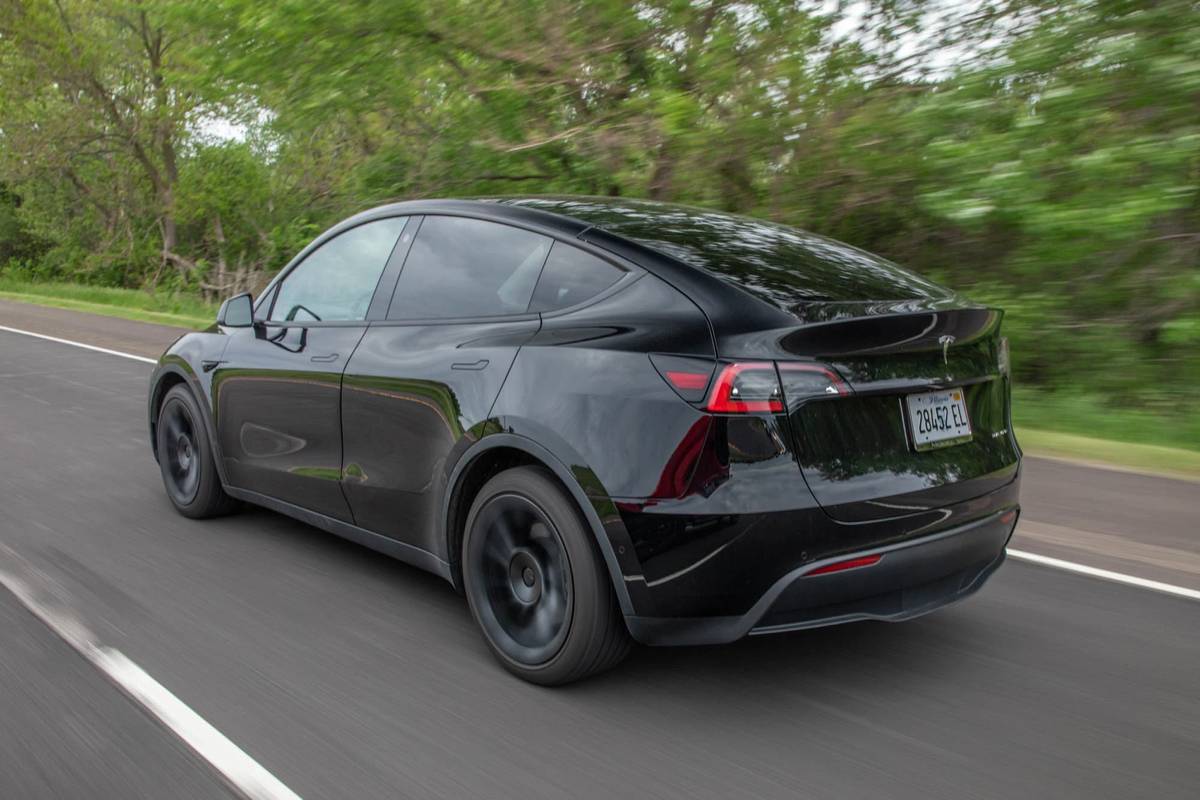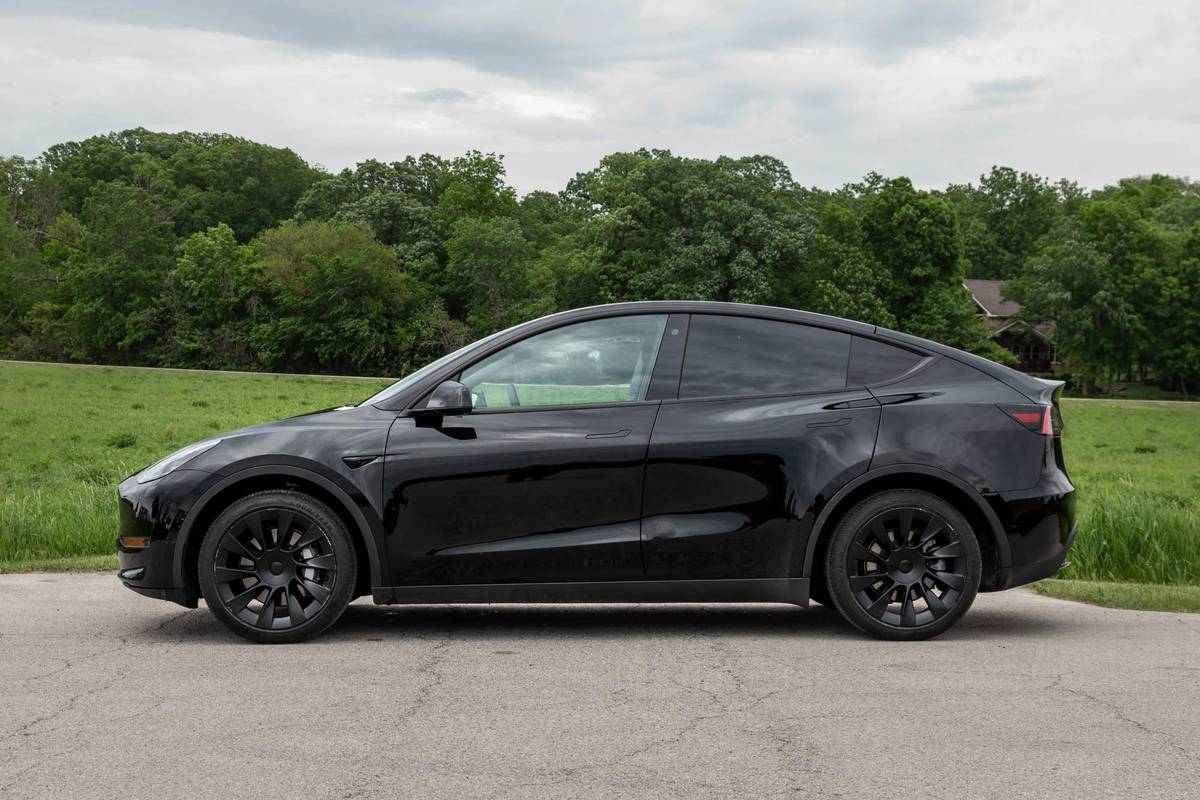Is the 2021 Tesla Model Y a Good SUV? 5 Pros and 4 Cons

The Tesla Model Y has done more than its bit to move electric vehicles into the mainstream while becoming a sales success in its own right. There are many good reasons for its success: A combination of virtues including range, interior room, performance and value make it an appealing choice among small SUVs regardless of their means of propulsion.
Related: 2021 Tesla Model Y Review: Have Your Cake and Eat It, Too
Essentially a taller version of the Model 3, the Model Y has a larger cargo area than its stablemate, with a liftgate in place of a trunk and a roomier interior. Its exterior dimensions are roughly the same as a BMW X4, and it has standard all-wheel drive.
On top of all that, the Model Y is a lot of fun to drive, with instant powertrain response, quick acceleration and better handling than a lot of SUVs. It also comes with Tesla’s semi-autonomous Autopilot driver-assist system, which — in spite of its name — Tesla does not recommend for hands-free driving. A full autonomous system is in beta testing now, with some of its features available now in the optional $10,000 Full Self-Driving Capability Package.
We recently spent some time in a 2021 Model Y and came away genuinely impressed. But not all is perfect, and the Model Y has some notable shortcomings. For Cars.com’s complete evaluation of the Tesla Model Y, visit the link above to read Joe Bruzek’s complete review. For a quick look at what works and what doesn’t, read on.
Here are five things we like about the 2021 Tesla Model Y, and four things that could use improvement:
Things We Like
1. Good Times Behind the Wheel

Thanks to DNA shared with the Model 3 sedan, the Model Y’s suspension is aggressively tuned for sporty driving. The result is a decidedly un-SUV-like feel from behind the wheel. Some might find the ride overly stiff as a result, but the Model Y offers a sports-car-like feel with quick steering response and taut reflexes. The electric powertrain provides instant throttle response and quick acceleration, with a Tesla-measured 0-60 mph acceleration time of just 4.8 seconds.
2. At Home With the Range
With an EPA-rated range of 326 miles, the Model Y can travel far enough between charges to make range anxiety a nonissue. To make things even better, the Trip Monitor feature works with the onboard navigation system to tell you how much energy will be needed to reach any destination entered in the system; the navigation system can also guide you to charging locations along the route. At home, the Model Y can charge at 21 miles of range per hour using a 24-amp circuit found in most homes equipped with a clothing dryer, but is capable of charging much faster at home with the appropriate setup.
3. Towing Capacity

Beyond its appeal as an extremely capable electric vehicle, the Model Y is ready and able to perform the duties of any family SUV. With a towing capacity of up to 3,500 pounds, the Tesla can pull at least as much as many conventional small SUVs and more than competing electric models. An optional tow package includes a tow bar with a 2-inch hitch receiver, along with the necessary wiring and a tow mode.
4. Loads of Room
With three separate storage areas, the five-seat Model Y offers buckets of room for stowing cargo. There’s the generously sized main rear cargo area accessed by the rear liftgate, which can be further enlarged by lowering the folding rear seatbacks. A concealed compartment under the cargo floor provides additional secure storage. You also get a front trunk that measures 2.9 cubic feet, which is where the engine would reside in a conventional SUV. It all adds up to a more-than-ample storage area, especially for the size of the Model Y.
5. Relatively Affordable Price

Our test Model Y rang in at an as-configured price of $54,290 with options including 20-inch wheels. While not inexpensive, that’s competitive with many other gasoline-powered luxury small SUVs. It’s also less than our recently tested Ford Mach-E First Edition, which carried a sticker price just shy of $60,000. Unfortunately, Tesla has sold too many cars to still be eligible for the volume-limited federal tax credit of $7,500, so don’t expect any help from the feds.
More From Cars.com:
- 2021 Cars.com American-Made Index: Which Cars Are the Most American?
- New Report Finds Tesla Most Popular Luxury Car Brand
- Tesla Recalls Model S, Model X Following Letter From Feds
- Which Cars Have Autopilot?
- Tesla SUV Buying Guide
- Which Cars Have Self-Driving Features for 2021?
Things We Don’t Like
1. Poor Visibility

The sloping roof combined with small rear and rear side windows make it challenging to see out of the Model Y when backing up, although the rear camera system on the large center display helps. The camera can be left on even while driving forward, so that’s a plus. The Model Y also has rear-facing side cameras mounted on either side, but we’d like it better if the display was located in a more convenient spot, like how some brands put that image in an instrument panel.
2. No Instrument Panel
Looking straight ahead from the driver’s seat, there are no instruments in the traditional sense. The speedometer is relegated to the far upper corner of the centrally mounted 15-inch touchscreen that is used to access pretty much all the Model Y’s controls. While a location in the middle of the dashboard makes sense for things like climate and audio functions, it doesn’t make sense for driver-specific controls and information.
3. Underwhelming Interior Finishes

The Tesla’s interior is nice enough, with open-pore wood surfaces, aluminum trim and well-appointed comfortable seats. But it is hard to call it luxurious, especially by the standards of some competitors. The good news is there’s ample legroom and headroom for 6-footers up front, and adequate rear seat room. A third row is optional, but our test car did not have one.
4. Tech Missteps
In an age when even budget-priced subcompacts offer standard Android Auto and Apple CarPlay, the lack of this compatibility as an option on a car in this price range is a head-scratcher. It’s even more surprising given how tech-heavy Teslas are. There isn’t even the option to use Siri voice to make hands-free calls, something offered in some cars that lack in-car assistant systems. On the flip side, the useful efficiency predictions and charge location features are tied into the navigation system, so they wouldn’t work with Apple CarPlay or Android Auto anyway. Another odd omission is the lack of a traditional blind spot monitoring system, with warning lights mounted on or near the side mirrors in the driver’s line of sight. Tesla chooses instead to provide a warning in the central 15-inch display.
Related Video:
Cars.com’s Editorial department is your source for automotive news and reviews. In line with Cars.com’s long-standing ethics policy, editors and reviewers don’t accept gifts or free trips from automakers. The Editorial department is independent of Cars.com’s advertising, sales and sponsored content departments.
Featured stories




